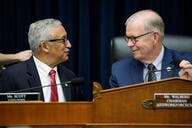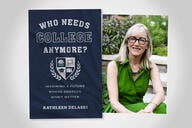You have /5 articles left.
Sign up for a free account or log in.

National Survey of Student Engagement
Findings released Thursday from the National Survey of Student Engagement (NSSE) suggest that the average student experience can vary widely from one college to another, even when the institutions are similar in size and selectivity.
Other NSSE 2014 Findings
- About 20 percent of first-year students and about one-third of seniors said social media "substantially" distracted them from coursework.
- First-year students who earned higher grades than they expected were more engaged and studied more, compared to students who performed below their expectations.
More than 355,000 first-year and senior students from 622 four-year U.S. colleges and universities participated in the survey, which is now in its 16th year. The results, according to a report detailing the survey's findings, suggest that a college's enrollment size and level of selectivity "bears little relationship" to student engagement and experiences with faculty.
“The idea that selectivity guarantees you a better experience, there's no guarantee,” NSSE Director Alexander McCormick said during a recent visit to Inside Higher Ed, where he discussed the survey and its findings. “And that's the same for enrollment size, as well. On a graph, it looks like a seismograph. There's huge bouncing around."
When plotted on a line graph based on enrollment sizes, the figures do resemble the sudden dips and spikes of a seismograph, with similarly sized institutions showing large differences in their average levels of higher-order learning, collaborative learning, effective teaching practices, and student-faculty interactions.
In addition to examining enrollment sizes, the researchers also grouped institutions based on the selectivity index used in Barron’s Profiles of American Colleges, and plotted the distribution of how institutions scored in regards to student and faculty interaction. Like the variance between the institutions in the similar enrollment “neighborhoods,” the results varied widely within each selectivity tier, with each group’s top institutions scoring significantly better than every group’s bottom institutions.
Some noncompetitive and less competitive colleges scored just as well as more selective institutions.
“These findings call into question the notion that attending a more selective institution assures a superior educational experience,” the report says. “Institutions with lower selectivity profiles can and often do offer experiences with faculty that are at least comparable to those at more selective institutions.”
The findings are not an indictment of highly selective colleges, McCormick said, but rather an indicator that open-admissions colleges don’t have to feel stymied by serving a larger population of more academically at-risk students or by having fewer resources. A wealthier, selective college might have more resources, but many of the characteristics NSSE attempts to measure are not things that can necessarily be improved with money, McCormick said.
The survey asks students how often they discussed career plans with a faculty member, worked with a faculty member on activities other than coursework, and discussed course topics and concepts with a faculty member outside of class.
“None of these things really cost more money,” he said. “Doing those things may not cost any more than not doing them. On the one hand, it may be discouraging you can’t just throw money at it and make it better. On the other hand, it’s encouraging that you don’t have to be a highly resourced institution to effectively engage students in these ways. What the survey shows is that colleges are not captives of their circumstances.”
A recent Gallup-Purdue University study found little relationship between the prestige of an institution and engagement after graduation, as well. "The study found that the type of schools these college graduates attended -- public or private, small or large, very selective or less selective -- hardly matters at all to their workplace engagement and current well-being," Gallup said.
Sleep Patterns
New to this year’s NSSE were questions regarding sleeping habits, or a student's “circadian preference.”
“Although much is known about the connection between sleep and academic performance, many college students are unaware of how their sleep habits can contribute to academic difficulties and the quality of their educational experience,” the report says.
Students were split into three classifications: morning students, who feel their best in the morning and prefer morning activities; intermediate students who said they had no strong preference between day and night; and evening students, who feel their best in the evening and prefer evening activities. Twelve percent of the 5,420 respondents were morning students, 77 percent were flexible, and 11 percent were evening students.
“Results indicate that morning types were significantly more engaged than their evening-type peers across 9 of 10 engagement indicators,” the reports says. The largest differences were found in quantitative reasoning, learning strategies, and supportive environment. The survey also found that nearly half of morning types spent more than 16 hours a week studying, compared to 38 percent of evening types.
Evening-type students were nearly twice as likely to spend more than 16 hours a week relaxing and socializing compared to morning-type students.
Brenda Dalton, director of student health services and wellness at Spelman College, said she was “tickled pink” to see research being done on the topic, and that the findings could throw cold water on some students’ claims that they can stay up all night studying with no consequences. Dalton leads Spelman’s “Wellness Revolution,” a health initiative that stresses the importance of exercise, nutrition, and sleep to students at the historically black women’s college.
“I think we’ll need further analysis, but it’s fantastic that higher education is actually looking at this issue,” Dalton said. “It’s been long overdue, but it’s better late than never. It’s great to have some real hard data we can sink our teeth into.”
Academic Advising
This year, about 215 institutions opted to include NSSE’s optional topical module about academic advising in its student surveys. About 127,000 students responded, making the advising module “by the far the most commonly selected module, indicating widespread concern for the quality and importance of advising,” the report says. The concern may be justified.
About one-third of students had fewer than two meetings with an adviser during their first year. Twenty-three percent had just one meeting, and 9 percent never met with an adviser.
More than a quarter of students who rarely met with an adviser described their institutions’ emphasis on academic support as “some” or “very little.” A disproportionate share of those not seeking advising are commuting, nontraditional-aged, and part-time students. The students who rarely met with advisers often instead turned to friends and family for advice instead, the report says.
“When you don’t require advising or set high expectations about contact and the importance and meaningfulness of frequent contact, and when you don’t work to make advising a very evident and obvious piece of the puzzle, these are precisely the type of students you don’t reach,” said Jennifer Joslin, associate director for content development at the National Academic Advising Association. “We know these students need contact with at least one caring, competent staff or faculty member that first year in order for them to know they’re part of the institutional experience.”
Indeed, the number of times students met with academic advisers in their first year was positively related to how supportive they felt a campus environment was, the report says. The positive link was found across all racial and ethnic groups, the report says, “which suggests that academic advisers help all student groups become more acclimated to the campus environment.”
But advisers seem to be making little headway in reaching these students. The findings are nearly identical to last year’s.
“It continues to be shocking,” McCormick said. “They aren’t seniors who think they have figured it all out. That wouldn’t be surprising. These are first-years. Either they think they don't need it, or the opportunities aren’t there for them."




